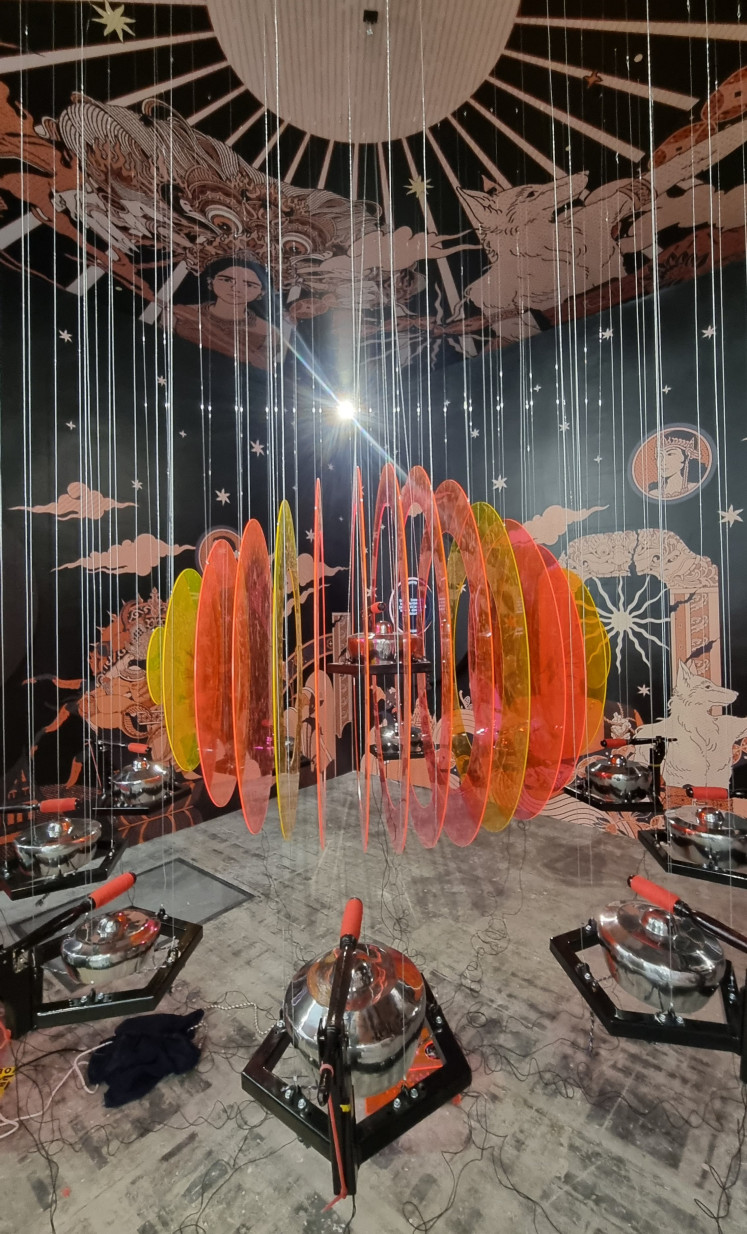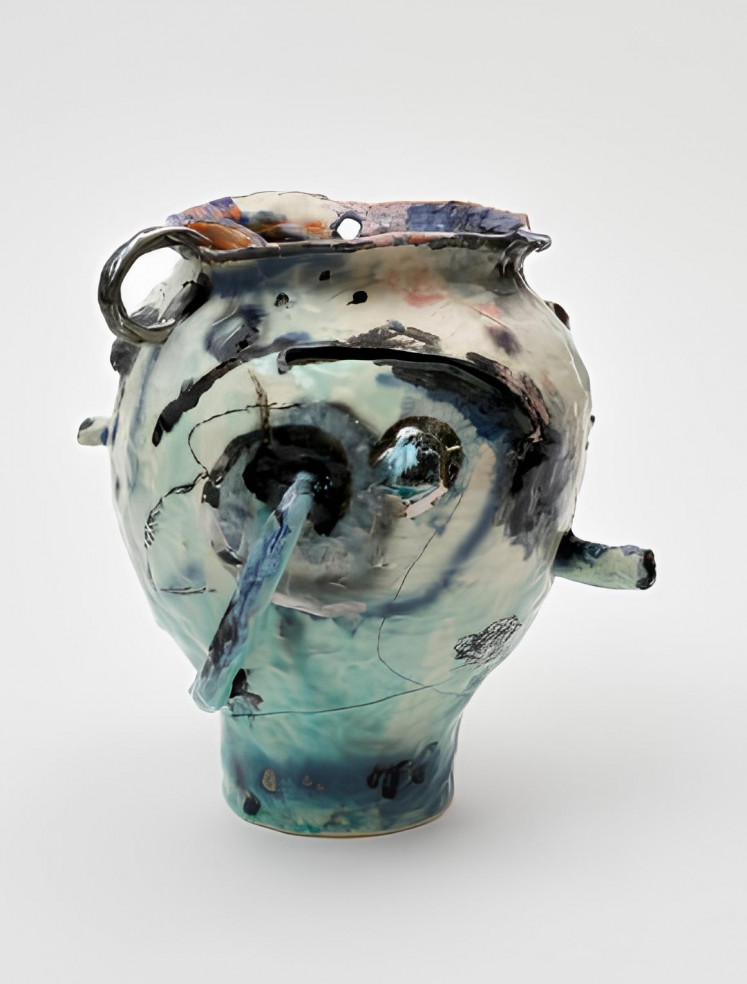October 9, 2025
JAKARTA – Art Jakarta 2025, held over the weekend, came as a delightful event that, in some ways, surpassed the usual art fair of salable works.
With 75 galleries participating from 16 countries, including dedicated groups from Korea and Japan, the fair once again marked a milestone, offering visitors a chance to savor exciting artworks to their heart’s content.
Among the most striking works was Agus Suwage’s enormous mural composed of 60 self-portraits that drew many in awe. Agus has long been known as an artist who continues to inform and inspire with sharp yet subtle irony and satire, reflecting on life around him and the wider world. Issues of life and death have occupied him for long periods, as has the often-contemptuous world of politics. His works relate to multiple forms of identity, human behavior and the fallacy of political power.
In this piece, presented as a theater stage, Agus uses his own image and parodies of animals to comment on the personae caught up in the frenzy of today’s world.
Another work that drew much attention was Aytjoe Christien’s new painting Lateral Balance, presented by Ota Gallery. Aytjoe ranks high not only for her conceptual depth but also for her strong position in the art market. Her latest oil on canvas, measuring 150 x 170 centimeters, is as abstract and contemplative as ever, not easy to interpret without speaking to the artist herself.

Lumiphona.dat’ by Ricky Janitra, mixed media and variable dimensions at the Art Jakarta 2025 exhibition, which runs from Oct. 3 to 5, 2025. PHOTO: MIRAH M/THE JAKARTA POST
Music of the sun
For some visitors, however, the commissioned work by Ricky Janitra, presented by iForte and iForte Energi, stood out as the highlight of the fair. Titled Lumiphona.dat, this interactive installation was based on energy data abstracted from iForte Energi’s solar panels located at Grand Indonesia. Functioning as a live, responsive organism, it drew from real-time variables such as photovoltaic yield, theoretical average yield, sun temperature and electrical input and output.
These were processed through algorithms and transmitted via iForte’s internet connection to move mechanical mallets that struck traditional kenong, instruments gathered from across the archipelago: Aceh, West Sumatra, West, Central and East Java, Madura, Bali, Lombok, Kalimantan, Maluku and Papua.
The kenong, a traditional unifying instrument, acts as a marker of cycles, a regulator of rhythm, and a keeper of harmony in numerous regional ensembles. As the solar data dictated the rhythm, the strikes on the kenong synchronized with messages of national and cultural resilience and unity, collected from thousands of spectators of Pagelaran Sabang Merauke and displayed on screens within the installation space.
iForte Energi sees this as representing the meeting point of renewable energy, connectivity, traditional Indonesian sound and digital art. The idea also reflects the spirit of Pagelaran Sabang Merauke.
In essence, solar panels not only convert sunlight into electricity but can also inspire contemporary works like Lumiphona.dat, which turns data into an interactive blend of technology, art and culture, linking the stories of Nusantara as one unified whole.
Ricky Janitra, better known as Babay, is an artist who constantly explores and engages with new media. Born in Bogor, West Java, in 1985, he studied graphic art at the Jakarta Art Institute but began focusing on painting in 2009 before expanding into digital experimentation involving sound, light and installation. A finalist in the fifth Bandung Contemporary Art Awards in 2010, he has since exhibited widely, including in Australia and Korea, gaining recognition for works that integrate art, science and interactivity.

‘Subtle Rupture’ by Jiyoung Kwon, featured glazed porcelain, engobe, pigment, ceramic pencil and white gold. PHOTO: P.S. CENTRE’S INSTAGRAM ACCOUNT/THE JAKARTA POST
Korea’s new voices
Another fresh highlight this year was the Korea Focus, introducing the dynamics of a new generation of artists from Korea. While it was the first participation for the 12 Korean galleries at Art Jakarta, their presence brought a refreshing vision and spirit of dialogue with Indonesian artists.
Among them, Jiyoung Kwon of Seoul’s PS Center stood out with her porcelain vessels that at first glance seemed bold and masculine, yet upon closer look spoke of the female body.
Kwon’s works testify to the transformative energy of clay. As her curator Gil Sua explained, “Clay may be weak, but once fired it hardens as porcelain,” perhaps in analogy to the strength and resilience of the female character.
Altogether, these works reflected the breadth and vitality of Art Jakarta 2025, from Agus Suwage’s deeply personal and satirical self-reflections, to Aytjoe’s meditative abstraction, to Janitra’s data-driven harmony of energy and sound, and Kwon’s sculptural metaphor of transformation.
This year’s fair once again proved that art, while rooted in the personal, continues to reach toward the universal, connecting tradition, technology and the human spirit in one continuous dialogue of creation.


